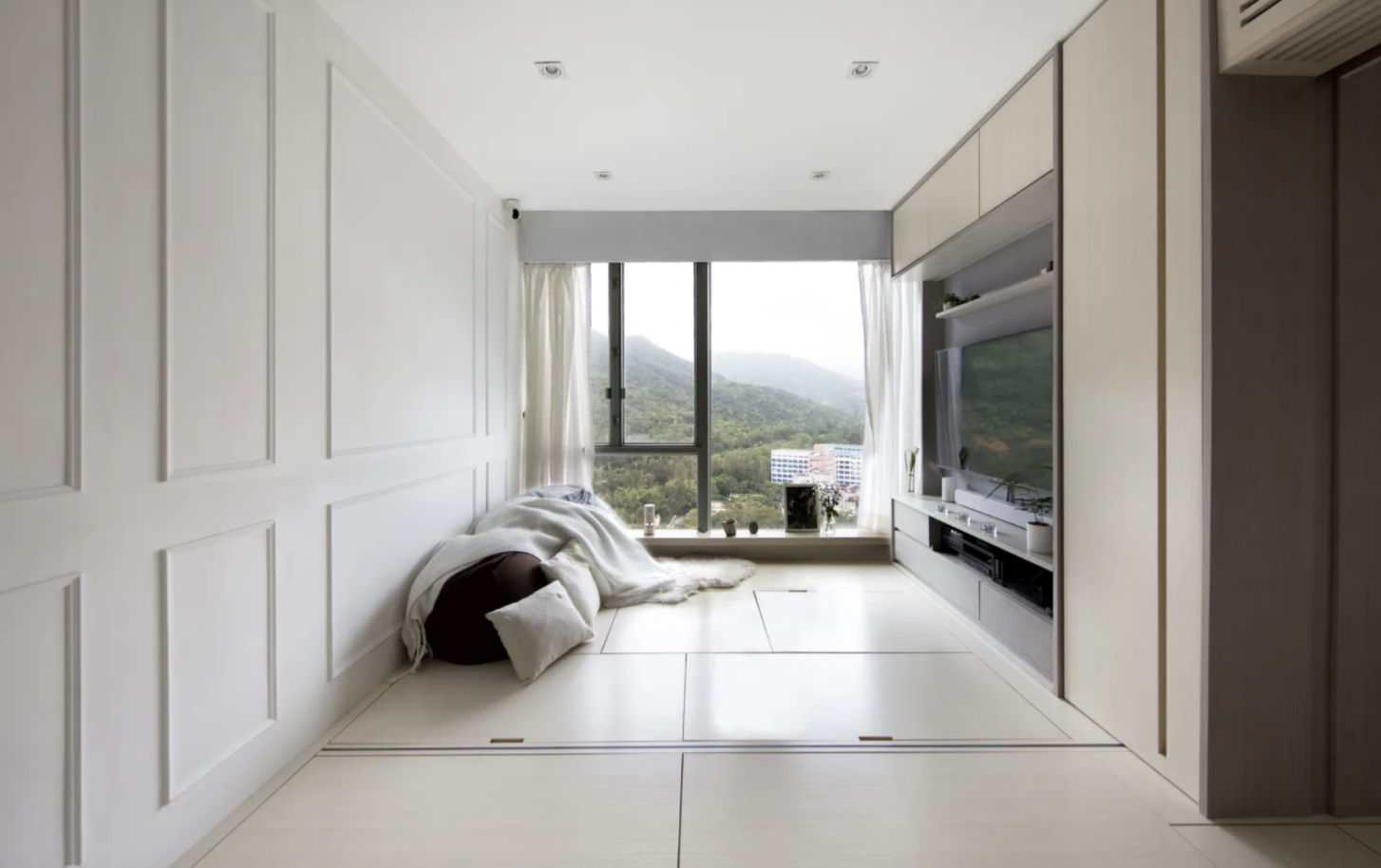Some smart home trends for 2022 that tech companies are pushing things you have heard of before. Many of the same “trends” appear again and again because, to put it simply, technology takes a long time to mature before most of us actually want to buy it. That applies this year as well.
Just a few years ago, creating a smart home with coordinated controls for lighting, motorised shades, multi-room audio, and heating and cooling required an expensive, comprehensive home-automation system and a renovation.
Today, many of those functions are accessible through affordable, consumer-friendly products. You can pick and choose the functions you want and install many of the products yourself, without opening up any walls.
A buzzy category this year will also be the so-called smart home, the technology to control home appliances by shouting voice commands at a speaker or tapping a button on a smartphone.
The truth is, the tech industry has tried to push this kind of technology into our homes for more than a decade. This year, these products may finally begin to feel practical to own.
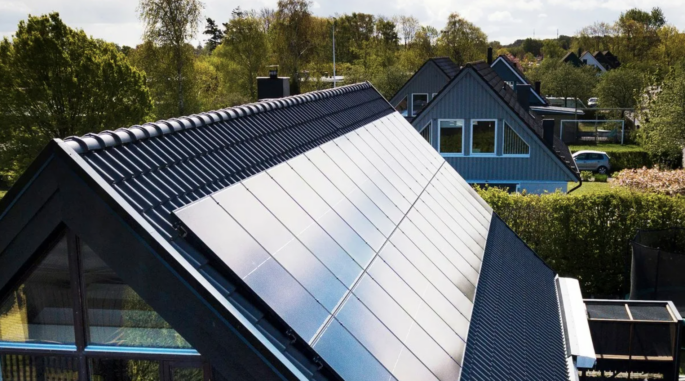
In order to hit its goal of becoming a climate-positive company by 2030, IKEA is now focusing on more sustainable products. Photo from IKEA.
The Smart Home
Over the last few years, smart home products like internet-connected thermostats, door locks and robotic vacuum cleaners made major progress. The devices became affordable and worked reliably with digital assistants like Amazon’s Alexa, Google’s Assistant and Apple’s Siri.
Yet the smart home, for the most part, has remained chaotic. Many smart home products didn’t work well with other technology. Some door locks, for example, worked only with Apple phones and not Androids; some thermostats were controlled by talking to Google Assistant and not to Siri.
The lack of compatibility has created long-term issues. An Apple-compatible lock isn’t useful for the family member or future tenant who prefers Android.
It would also be more convenient one day if our home devices could actually talk to one another, like a washing machine telling a dryer that a large load was ready to be dried.
This year, the tech industry’s biggest rivals — Apple, Samsung, Google and Amazon — are playing nice to make the smart home more practical. They plan to release and update home technology to work with Matter, a new standard that enables smart home devices to talk to one another regardless of the virtual assistant or phone brand. More than 100 smart home products are expected to adhere to the standard.
“We’re all speaking a common language built on already proven technologies,” said Samantha Osborne, a vice president of marketing for SmartThings, the home automation company owned by Samsung.
This means that later this year when you shop for a product like an automated door lock, look for a label indicating that the device is compatible with Matter. Then, in the future, your smart alarm clock may be able to tell your smart lights to turn on when you wake up.
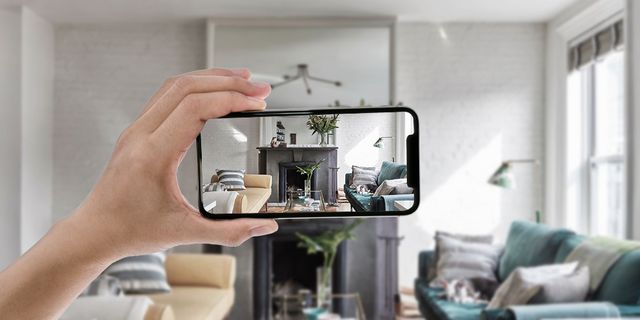
Credit: Elle Decor
The Best Smart-Home Gadgets Hide the Tech
Living with technology can often mean a mess of different cables, apps, adapters, remotes and confusing interfaces. Gadgets that can tuck themselves away or have hidden smarts, unlocked with a word or a hand wave, are an especially nice idea, especially now that we’ve been spending more time at home. A hidden wireless Qi charger, called UTS-1, can be mounted to the underside of a nonmetallic surface using the included tape. Plug it into the wall, and you’ve just added wireless charging to your furniture. It keeps your desk tidy and prevents your housemates from stealing your charger.
Kew Labs, the company behind the product, claims the 30-watt charger can beam power through tables and nightstands up to an inch thick. It patented a method to ensure safety and efficiency over the relatively long distance. (With wireless charging, alignment and proximity are typically key. Even a bulky case can interfere with proper charging.) The UTS-1 retails for $105 on Kew Labs’ website.
There’s now devices to make any coffee table a wireless charging station, a standard-looking deadbolt lock that unlocks with a touch, a bed with a disappearing, transparent TV, and a faucet that can dispense exactly two tablespoons of water on command.
Even lavatories with a lid that automatically opens as you approach and closes when you walk away—which solves one of the longest, ongoing quarrels in any home.
Level Touch is a smart deadbolt with phone-sensing near-field communications (NFC) technology, the same powering contactless payments at the grocery store. As long as your phone is on your person, a simple touch of your finger unlocks or locks the door. Alternatively, you can tap your phone or a registered keycard—like the kind you get at hotels—to the deadbolt.
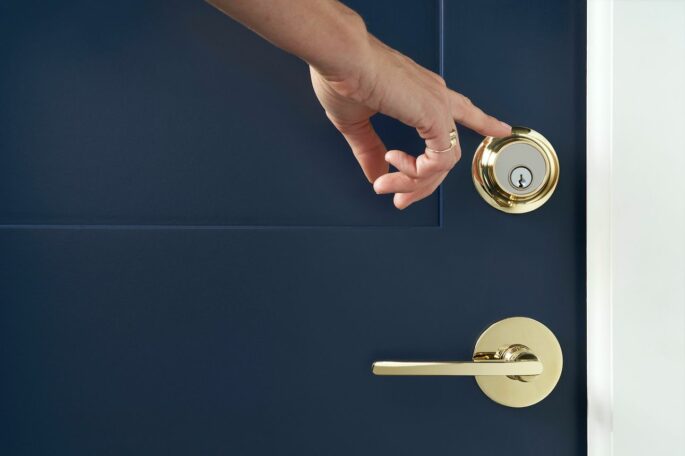
Level Touch looks like a standard deadbolt but has phone-sensing near-field communications technology inside. Credit: LEVEL
The affordable system doesn’t have a Wi-Fi antenna, which in this case is a perk rather than a flaw. Low-power NFC tech means you don’t have to worry about the battery for a year. (Other smart locks, like August, need battery replacement every three to six months.) When there’s no power, a plain ol’ key works, too. The touchless faucets and toilets you’d normally find in public spaces are making their way into home kitchens and bathrooms as a germ-reducing update that’s apropos during a pandemic.
Don’t expect a mere airport sink. Sure, a hand wave will turn water on and off on new models by Moen and Kohler. But a nearby smart speaker unlocks more functionality. A special hand-washing skill by Moen briefly turns on the water then shuts off for the CDC-recommended 20 seconds while you lather; when it’s time to rinse, the water runs again. “Alexa, ask Moen to fill the baby bottle.” When you say that, it warms water to a preset temperature. “Hey Google, ask Kohler to pour three cups of water.” With that, you get the exact amount, no measuring cup necessary.
The smarts aren’t exclusively for convenience.
Under the sink, new whole-home water monitors—Flo by Moen and a co-branded one from Phyn and Kohler—work with smart faucets and other sensors to collect usage data from around the house, detect leaks and automatically shut off water in case of emergencies. Kohler’s Innate toilet similarly provides touchless functionality by way of a proximity sensor that automatically opens the lid as you approach, and auto-flushes when you walk away. Critically, the toilet self-closes when you’re done. You do need to press a button to lift the seat on this model: To do so, you press a button on the toilet’s remote.
For those with Bruce Wayne-level budgets, there’s also Kohler’s $16,000 smart tub. Featuring Google Assistant or Alexa voice control, so you can start your bath remotely, it also has an essential-oil-dispersing aromatherapy tower. Water flows over the bath’s edge into a surrounding wooden moat, where it’s reheated and recirculated back into the tub. Oh, and it also produces its own fog.
LG Electronics, is showcasing a 55-inch transparent OLED display built into the foot of a smart bed. The screen can collapse completely, and appear in partial or full view, depending on what you’re looking at. And it won’t obstruct the view outside your actual window if all you really want on screen is the time and weather.
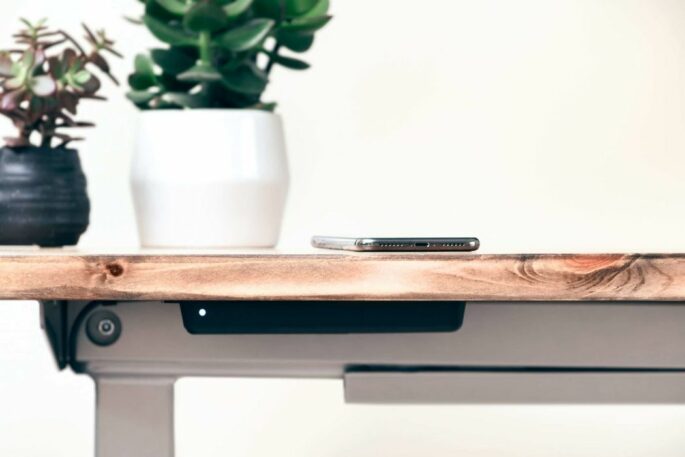
Kew Labs’ 30-watt UTS-1 adds wireless charging to nonmetallic surfaces that are no more than an inch thick. Credit: KEW LABS
Audio Healing + Sound Technology
Wellness seekers are tuning into audio platforms and sound technology to achieve relaxation and mental restoration at home. Heightened audio is a new way for healing. Social media platforms such as Instagram have driven a hyper-focus on visual elements over the past decade. Now, especially as digital platforms mature and engagement evolves, focus is shifting to multisensory elements—audio, in particular—for a truly immersive experience at home.
Teleporting today
The digital world is offering immersive travel experiences from the comfort of home. This immersive technology gives travel the potential to be less cost-prohibitive, more accessible and more imaginative.
Purification Tech
A new wave of technological innovations are using biotechnology to purify air spaces at home. As this tech develops, its functionality is being tested aiming to mitigate the effects of air pollution in our living spaces ushering in a new era of healthy homes.
Start With One Thing
There is no need to make your home a technological wonderland on Day 1. Starting with one piece is the way to go. You can started you smart home journey with a single smart plug. That allows you to turn a lamp on and off using an app. What you’re doing is taking a very logical step that solves a problem or adds value to your home immediately.
Choose the thing that seems most useful for your lifestyle — a smart dimmer, thermostat, speaker, security camera or something else — and add other things later if you find the first device helpful. Normally, once you buy one thing, you will buy six or seven other appliances to really build it out. An added bonus? Smart thermostats, and gadgets may not save buckets in the long run, but they can bump a home’s resale value.

